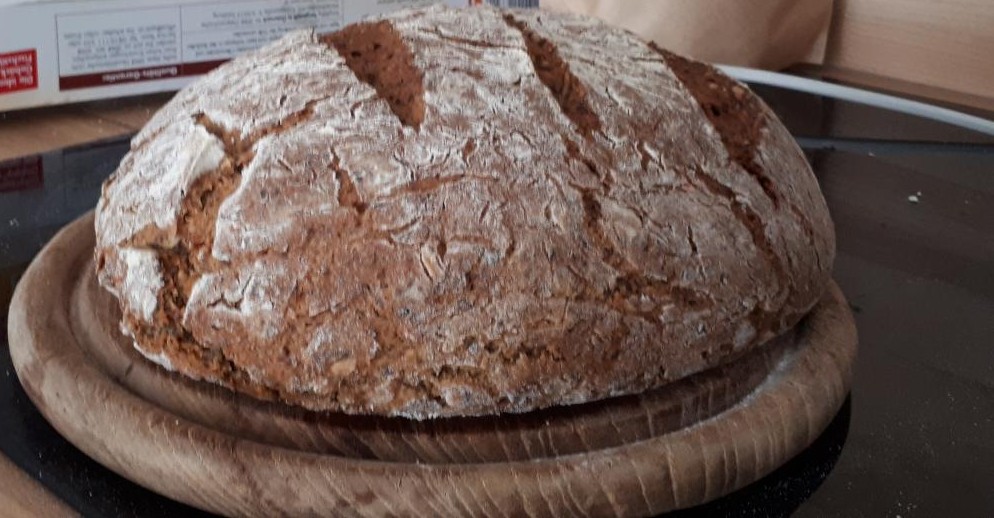I just bought an ice cream machine with a compressor for half price. I thought it would be easy (it isn’t) but I am nerding out.
I will explain to you all, to my best understanding, some theory about frozen deserts.
First, about ice formation: Imagine some water-ice mixture. Liquid H₂O molecules will, with some probability pertaining to their low kinetic energy and being next an ice crystal, join the ice crystals, making the ice crystal grow. At the same time, water molecules on the surface of the ice crystal, will, with some probability related to their kinetic energy, break loose of the crystal structure and join the liquid water.
If more molecules go from liquid to ice, more ice will form. If more molecules go from ice to liquid, the ice melts. What effect dominates depends on the average kinetic energy of the water molecules aka the temperature. Above 0 °C, more ice melts than freezes onto crystals; below, more freezes than melts.
Now, if, instead of pure water, you dissolve sugar (or salt or ethanol or whatever) into the water, that will make it less likely for liquid water molecules to join the ice crystals, because the sugar is in the way of the water molecules wanting to join the ice. It makes the liquid-to-solid transition less common, less probable, because there are just less liquid water molecules next to the ice surface. Because the sugar doesn’t join the ice crystals itself, the ice is is just pure water, and the opposite ice-to-liquid transition is not affected by the sugar.
So, in a sugar-in-water solution, for the same temperature, less H₂O molecules will join the ice, while the same amount will melt as in the pure water case. This effectively depresses the freezing point. You now will need a lower temperature than 0 °C to form ice in order to make up for this. You can approximately calculate this temperature quite easily because the drop in freezing point is proportional to the amount of sugar (or salt …) molecules in the solution.
Interestingly, the mass of the sugar doesn’t matter, only the number of molecules does: If you dissolve a certain amount of sucrose (a double sugar) molecules, it will affect the freezing point the same way as adding the same amount of glucose molecules, even though glucose is half the mass. The same goes for salt: One NaCl, because it splits up when dissolved in water, will depress the freezing point approximately like two sugar molecules.
The second important point: The concentration of sugar in the water increases as ice forms. The sugar stays in the liquid solution; the ice is pure water. So more ice means a higher sugar concentration in the liquid that remains, depressing the freezing point of the remaining liquid. This means that for any specific temperature, sugar-water will freeze only partially to a certain percentage. You can calculate (for example), if you have 500 g of sucrose dissolved in 1 l of water, and you freeze that to -18 °C, about 79% of the water will be in ice form.


Soft serve I have only ever seen at McDonald’s around here. Since I was also interested, I looked it up: It’s lower fat, a lot more airy and the serving temperature is only -4 °C, whereas store ice cream is like -15 °C or thereabouts (freezers are supposed to be -18 °C) and Italian gelato (very popular here in Germany) is around -12 °C. The serving temperature isn’t just some unimportant detail: Soft serve would presumably turn into a somewhat airy but hard ice cube in a freezer, while gelato would turn into soup at -4 °C. You cannot turn any recipe from either into the other. The adjustments would be massive if you tried. All the ingredient ratios would be totally different. You’d have to change pretty much everything.
I suspect you need a special machine to create soft serve. I don’t think a usual ice cream machine, which basically just cools and churns, is able to do the airiness justice.
Yeah, soft serve machines do a continual churn in a process kinda like a cement mixer